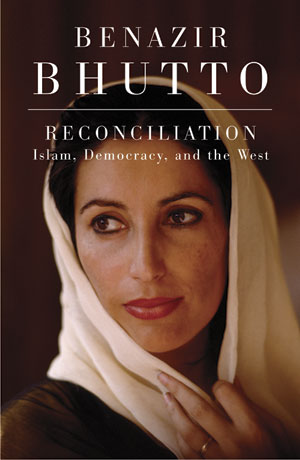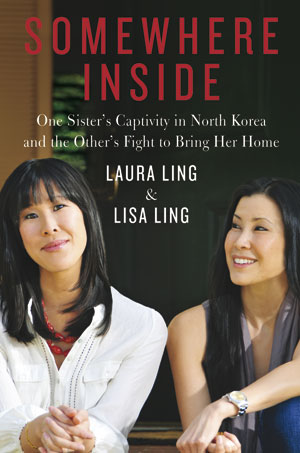Girl with a View
By Sascha Akhtar | People | Profile | Published 14 years ago
Mumtaz Mustafa is a young woman going places in a no uncertain way. At a time when Pakistan is struggling to recover a semblance of a national identity that is not tainted by its association with violent and aggressive factions, it is rare to read a news story in the western media that presents the country in a positive light. Last month, The New York Times ran just such a story about the first New York Sufi Music Festival, a free three-hour concert in Union Square, with music from the four provinces of Pakistan. Mumtaz, who has been an art director at HarperCollins in New York since 2007, was called upon to join the Pakistani Peace Builders team who were behind the event. “The initiative,” Mumtaz shares, “was conceived as a celebration of Pakistan’s rich culture and amazing Sufi music traditions, to remind the world of some of our shared values that are both humane and life affirming.”
For a cause such as this, taking time out from a full-time job that regularly demands long hours was a no-brainer for Mumtaz. “Any opportunity to work in the social sector is worth jumping at,” she explains. “As a successful Pakistani woman in New York City, I feel like I have been fortunate, so I try to give back.”
Mumtaz created the visual identity for the Pakistan Peace Builders; everything from the logo, stationery, stage design, banners, web and print invitations, which were distributed to every corner and borough in New York. This was obviously a project close to her heart — she had just two weeks to deliver and took it on pro bono. “We need more events like this,” Mumtaz says with urgency. “The PPB was formed after the attempted bombing in Times Square by a Pakistani-American.” Shaking her head in disbelief, she talks of how the only way to change the negative perception is by showing other sides to Pakistan, such as the Sufi festival did, presenting messages only of peace, love and tolerance. And she understands well the signifance of doing so.
Mumtaz was fresh out of college with a BFA in graphic design from the Rhode Island School of Design a couple of months before the 9/11 attacks happened. “Overnight, companies underwent hiring freezes. Potential design positions were no longer vacant. I was in Pakistan when it happened and all flights to the US were suspended.” Eventually managing to get a flight back from Dubai, she had resigned herself to the prospect of working part-time as a catalogue designer for a toy company during the day and then in retail at Banana Republic on nights and weekends. But fate, it appears, had other plans for her. Mumtaz found herself, at the age of 23, hired by one of New York’s most prestigious publishing houses, HarperCollins, as an assistant designer. HarperCollins Publishers is one of the world’s leading and most technically innovative publishers covering literary and commercial fiction, business and children’s books, cookbooks, mystery, romance, reference, religious and spiritual books. She recalls the excitement she experienced when her journey began: “I was over the moon! I was going to live in my dream city surrounded by a sea of books.”

Mumtaz Mustafa designed the cover for Benazir’s last book, Reconciliation.
Most Pakistanis wanting to “make it” in the big city are familiar with the labyrinth of paperwork and the heart-stopping moments that one experiences when trying to brave the immigration system in a new country and make a living simultaneously. “It was difficult to climb up the corporate ladder given that I was on a limited visa, and Harper was hesitant to sponsor me for a green card.” As is often the case, she had to work harder to prove herself, working late hours and making sure the books she designed became best sellers.
Gratifyingly, four years later, she found herself in the enviable position of art director — superseding others who had worked 30 years. And recently, she received news of being given an additional imprint to manage. “The vice president of the imprint, specifically wanted me to head this,” she says.
Mumtaz’s job affords her the opportunity to travel all over the country and beyond for photo shoots and, in the process, meet a variety of authors. “I have been invited to fabulous book launch parties and interacted with the crème de la crème of New York’s literary world. There is nothing more gratifying then a personal pat on the back from an author or agent when their books do well in the market,” she says. There is, of course, a great deal of pressure on the art department to create cutting edge book designs that shout out to potential readers from store bookshelves. If a book does not do as well as expected, the assumption usually tends to be that the design was not “arresting enough” she maintains.
Describing her workplace, Mumtaz reveals, “Often, we sit behind our desks, faces hidden behind two computer screens, headphones on and working endlessly. Some start from scratch with a paintbrush and a heap of newsprint. Others venture outdoors, camera and sketchbook in hand. We are given total creative freedom. However, it is not often that we get an outrageous cover approved by all involved. It’s usually ‘too cool’ for the market, or ‘too out there’ or ‘lacks the human element.’ The list is endless.”
The design process starts at ‘Launch.’ Launch meetings are where most of the company (sales, library and academic marketing, publicity) learn about upcoming books for the first time.
‘Planning meetings’ are then scheduled, where each book is discussed at length and brainstorming about potential looks for the book takes place. Manuscripts are handed over and the designers are asked to present covers within the next couple of weeks. Sometimes a cover gets approved in the first round and other times the process can take a hundred rounds.
The manner in which books are acquired has changed with time and technology. Harper has made sure to remain on top of all cutting edge technology and trends. Editors follow people via their blogs and twitter. A large number of incredibly successful books have been acquired via the Internet. There is also, however, the traditional book auction approach with agents representing HarperCollins authors. Mumtaz feels “like they are just much more open to new books and new ideas. We are constantly evolving, which is why we have managed to stay afloat in an age with Kindles and such.” Increasingly, Mumtaz says, there is a keen interest in South Asian and Middle Eastern books, particularly after the success of The Kite Runner. Simultaneously, however, many Harper authors want to start writing about vampires and zombies courtesy the success of the Twilight series. “It’s all about what is happening today. The readers ask and we deliver,” Mumtaz adds.
What makes the job even more stimulating for Mumtaz is that she is a voracious “and indiscriminating” reader by her own measure. “I read everything, and here, at Harper’s, I can read both for work and for fun. It seems oh-so-decadent to re-read a random novel that I remember enjoying a year ago. I love that I can sit in my office and read all day.”
Besides her day job at HarperCollins, Mumtaz continues to make time for her social agenda. She was instrumental in ‘Take Our Daughters to Work Day’ at HarperCollins, where the South Asian Women’s Leadership Forum (SAWLF) partnered with South Asian Youth Action (SAYA!) to inspire young girls from low-income homes who do not have access to large corporations. “Over 45 high school students got a chance to visit corporate offices such as JP Morgan Private Bank, HarperCollins, MTV, Infosys and Colgate, thanks to SAWLF women who are already working in these companies,” says Mumtaz.
Identifying a strong female role model in her, SAWLF has also invited Mumtaz to participate as a panelist in a women professionals’ panel to be held later this year, and she will be in charge of finding potential participants, hosts, and corporate partners who can support the programme by financial or in-kind contributions for ‘Take Our Daughters to Work Day’ 2010-2011.
Mumtaz is thrilled to see a transformation in the media and communications industry in Pakistan. In particular, she finds the increase in female media personalities and voices spanning television and radio, heartening. “This emergence has influenced the general acceptance in society of strong female expression,” she says. Mumtaz sees an interesting parallel in her own personal evolution and the evolution of Pakistani women. “Women were meek. However, today, they are much more confident and progressive. A few years ago, I would never have thought I would be where I am today.”

Mumtaz Mustafa was also involved in the art direction and design for the book, Somewhere Inside, featured on Oprah.
Mumtaz has created book jackets in the hundreds, but is particularly proud of her role in orchestrating the acquisition of her late aunt Benazir Bhutto’s last book, Reconciliation, for HarperCollins. The book made its way up the New York Times best-seller list. “I am particularly attached to this project, given her untimely death/assassination. It was an honour to design the cover for this,” she says.
More recently, she was involved in the art direction and design for the book, Somewhere Inside, featured on Oprah, that contains a memorable account of journalist Laura Ling’s incarceration in a North Korean prison and her sister Lisa Ling’s story of how she managed to free her.
“I often refer to myself as having a New York complex. I cannot take the day off and do nothing. I am constantly guilty and have to keep active until it’s time to fall into bed,” says Mumtaz.
This drive is manifest in the myriad side-projects Mumtaz has undertaken: to create promotional and fund-raising materials for non-profit organisations such as SAMMA (South Asians in Media and Marketing), DIL (Developments in Literacy), Deshpande Foundation, Ibtida (A New Beginning), SAKHI for South Asian Women, Naya Jeevan and the UNDP. “One is constantly trying to evolve and then evolve again,” Mumtaz says of her own personal ethos.
Currently, in light of the catastrophic floods engulfing Pakistan, Mumtaz is actively engaged in the Pakistan Peace Builders Relief 4 Pakistan campaign. “We have launched an emergency fund-raising drive. We hope to be able to raise a minimum of $100,000 with a drive concentrating on Pakistani-Americans, raising awareness amongst their friends and colleagues throughout the US and beyond.”


